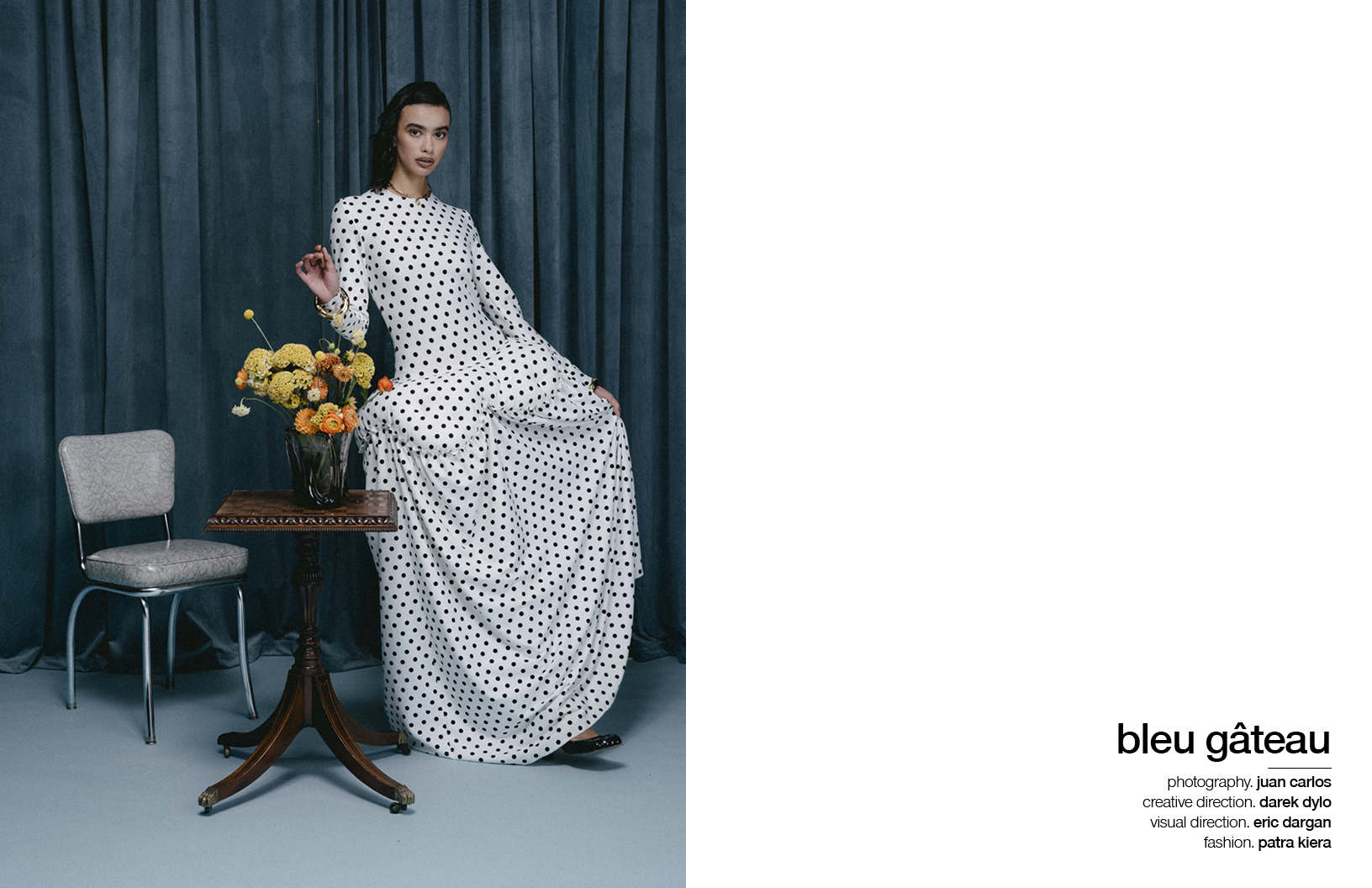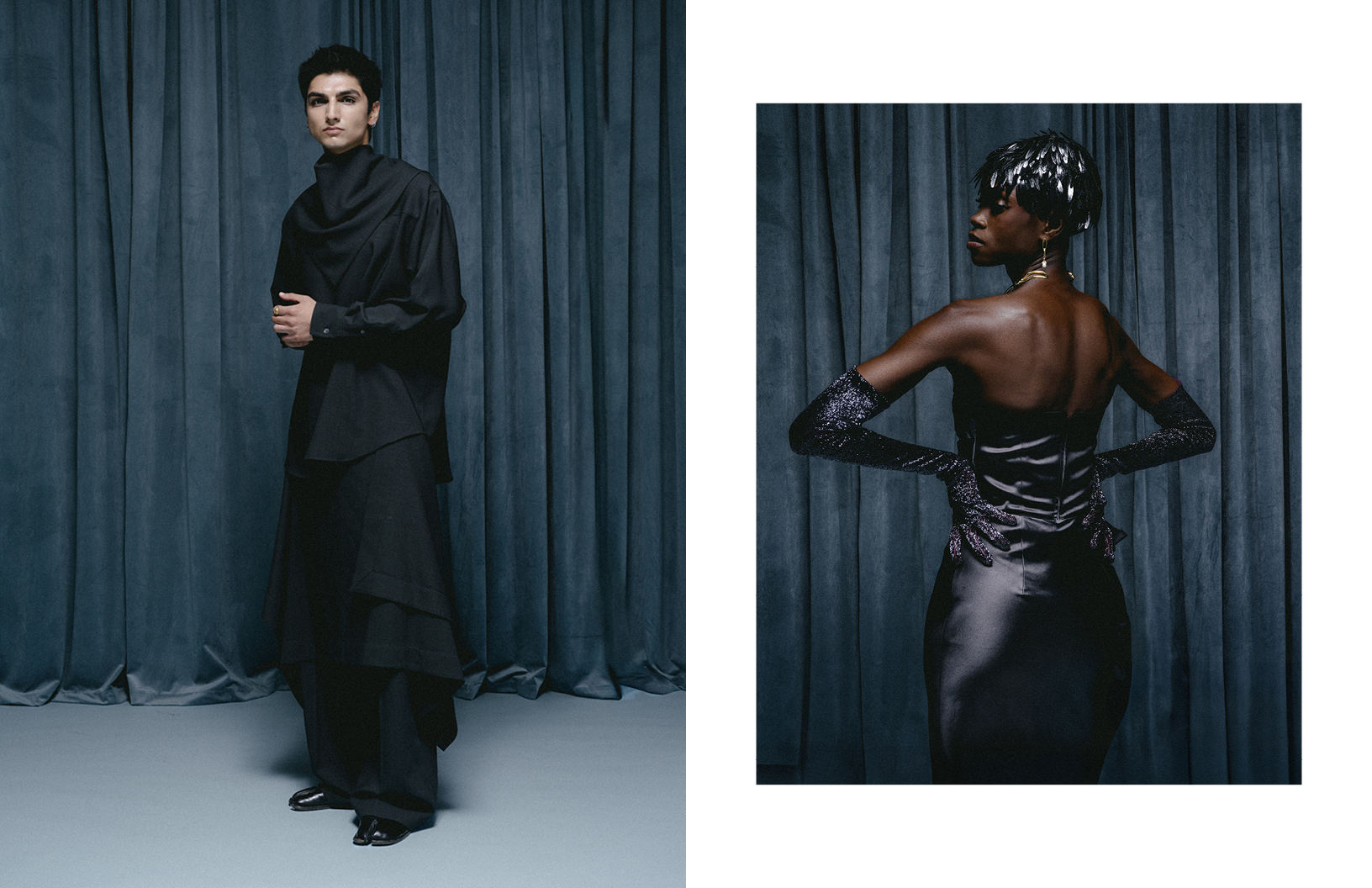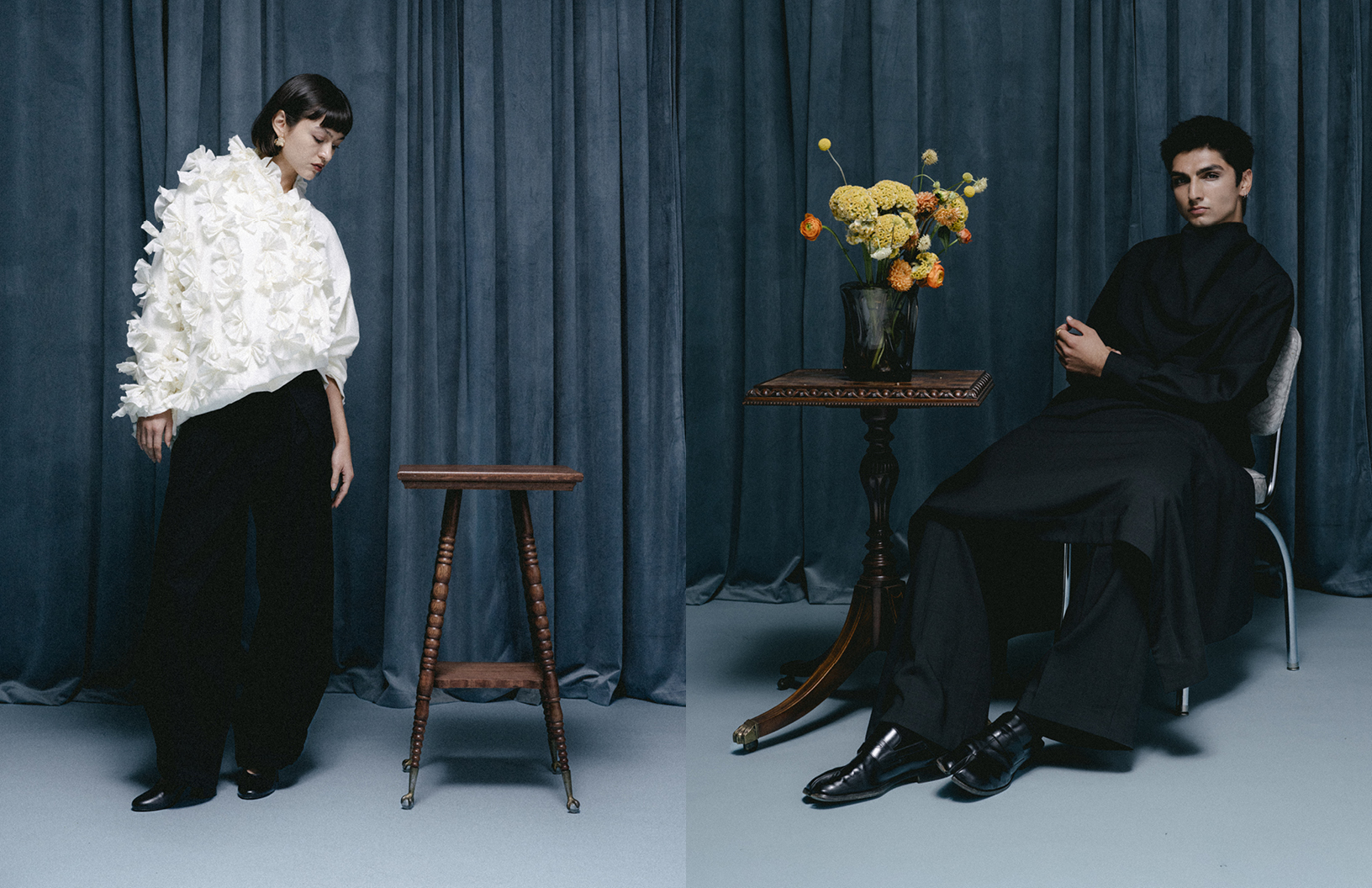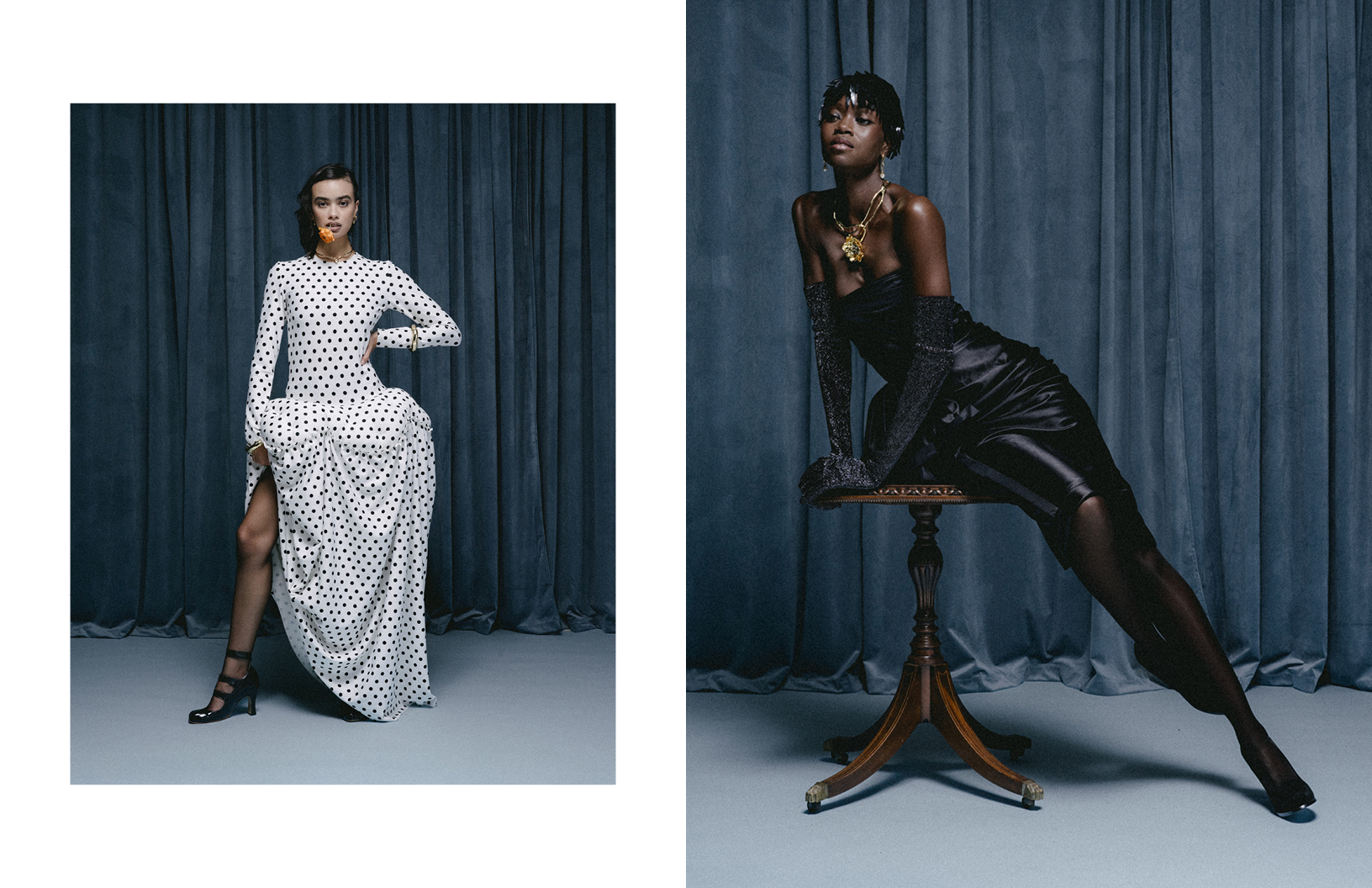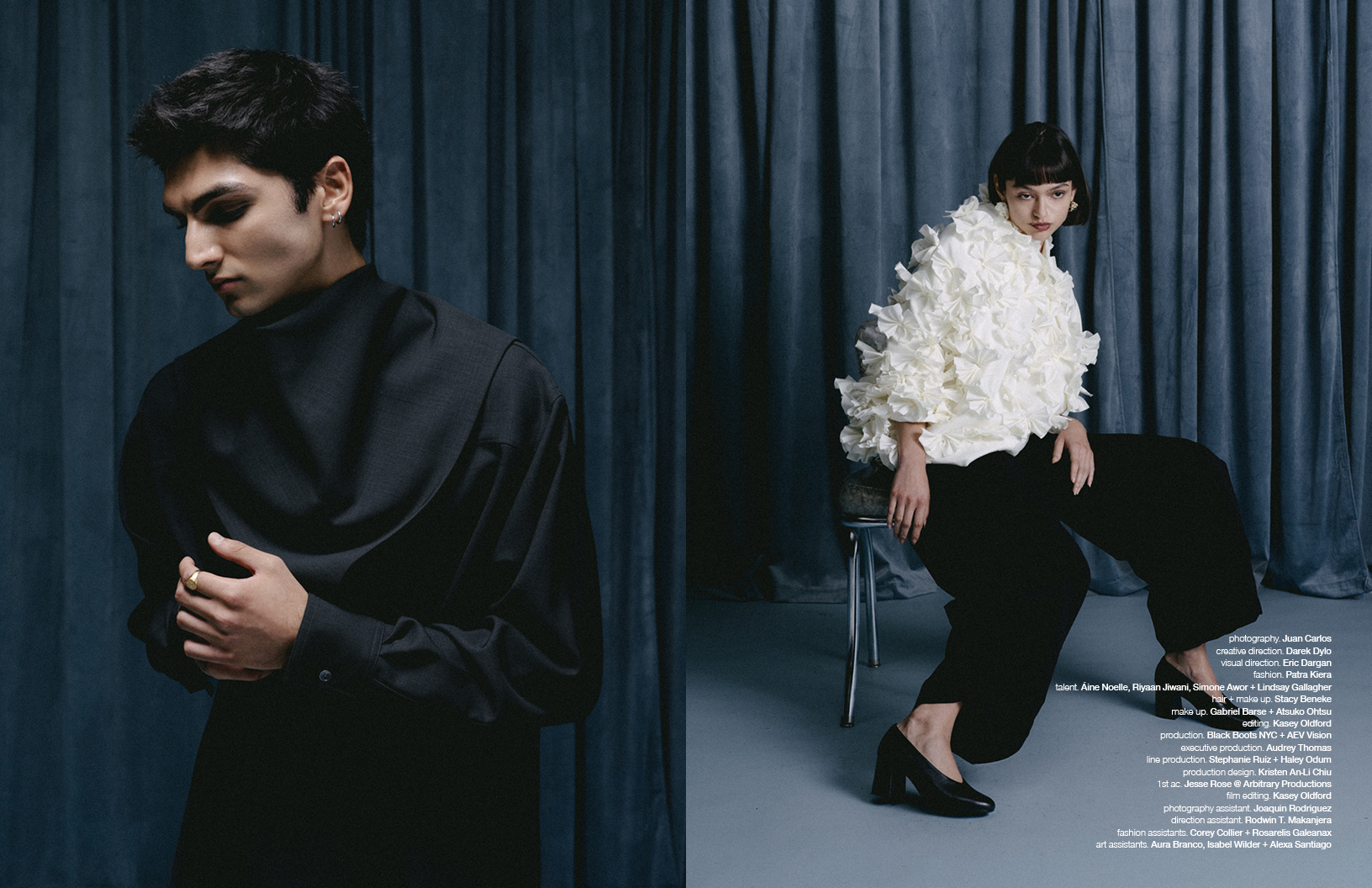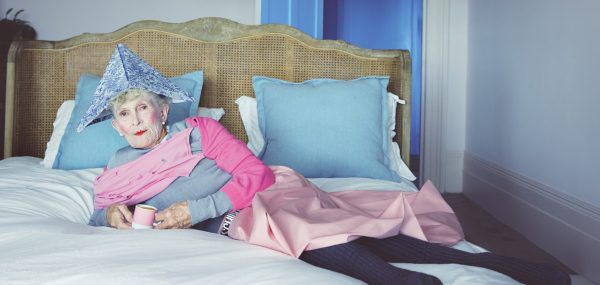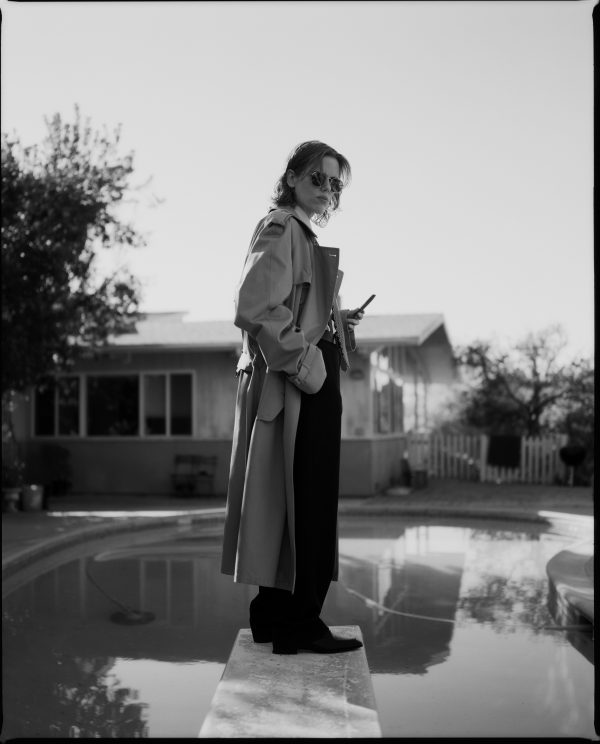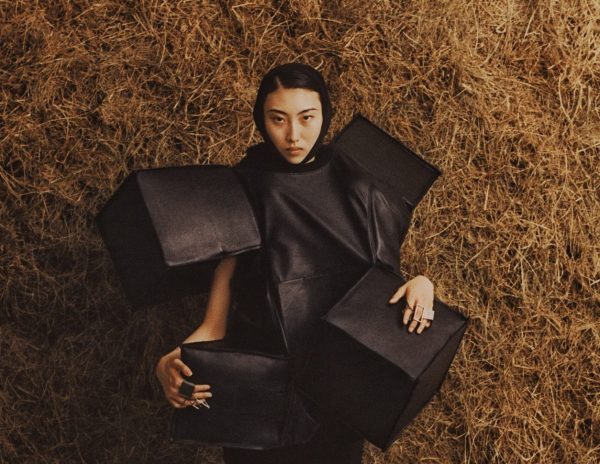It is undoubtedly a fashion observer’s job to be positive — and I don’t mean uncritical, or even bland — but, sometimes, the season just isn’t great: designers seem lost and sitting down staring at a blank screen might even feel like a chore. Not this season!
This January at the Paris Haute Couture shows, designers were newly confident and focussed. Every one of them seemed to have a real sense of personal signature and creative identity (plus a strong seasonal narrative) to communicate: the sense that haute couture is still relevant and figures, although notoriously difficult to find, are on the up. Balmain notoriously re-launched couture and the schedule was jam-packed with opportunities to see collections: on the catwalk, in salons with a few models, and some simply displayed on mannequins.
This season,Bertrand Guyon’s Schiaparelli moved from the intimate salons of Place Vendôme to the gilded splendour of the Opéra at Palais Garnier — and the richness of his work certainly hold its own against the surroundings. The surrealism and artistic creativity of the maison’s founder, Elsa Schiaparelli, is always evident in his collections, alongside the sharp tailoring her clients adored. Astrology and floral motifs also run through the house’s aesthetic, like a thread of inspiration. However, beautiful though the show is, once able to visit the salons to see the clothes closeup, the raison d’etre for the entire enterprise is clear: couture needs to truly be ‘couture’ to both invite the clients into its world and to clearly distinguish itself from ready to wear. Encrusted embroideries, exquisite filigree traceries of paillettes and gems, crewel embroideries, layered embellishments, seams and darts faced in contrast satins, bell-shaped skirts flaring out into bustles, tulle and Duchesse satin — every trope of the couturier’s art is employed in the ateliers and fournisseurs of the house. The quality and level of the work are staggering and, closeup and in the hand is the only way to truly appreciate it. Bravo to the entire team for basically defining what the term “Haute Couture” means.
Iris van Herpen has hit her tip-top form simply by focussing on the clothes and stripping away the tricks. This season was seemingly inspired by the forces of nature — but abstractedly rather than literally. The designer took us from flying plissé robes that fluttered like exotic creatures, through to cool multiple layered glacier-like constructions. The flower-like structures and the frozen-in-time cloud dress were, upon first glance, exceedingly short, but she used proportions to enfold and envelop the wearer rather than portraying “sexiness” in the conventional sense. The techniques on display, as usual, were extraordinary: from petal-like layering folding in on each other, fluttering panels overlapping like wings, to column dresses with fragmented surfaces reminiscent of the repeated foldings and pleatings of a Chinese lantern. The whole experience was beautiful and, with all the attention on the clothes, the end of the show — when heavenly skies descended and a sliver of sharp light cut across the floor — had even more of an impact. Amazing.
Georges Hobeika does a wonderful job of keeping his signature romanticism under control, without it becoming fussy or messy. His silhouettes are always sharp — be they slender of full —, his colours are sweet but never sickly, and his embroidery is always perfectly judged. Amongst couture designers, he is, in a sense, underestimated because he is neither flashy nor overburdened with tricks. But that’s a much more difficult job than it appears, and I salute Monsieur Hobeika for his collection of simply beautiful clothes.
Maria Grazia Chiuri took us straight to the circus — but what a circus. The troop of all female tumblers and acrobats formed a human arc to introduce the show — symbolising how fashion, and couture especially, is the support, and the team. How the designer does not stand alone and in isolation. The show itself had a touch of ringmaster red, a splash of bold clownish stripes and patterning, but it mainly focussed on a neo-romantic interpretation of the circus — perfectly in tune with Monsieur Dior and the 1940s. The delicate colours of Marcel Vertes and Christian Berard, the ballet-like feel of the tulle and weightlessness, and the strolling players who still travelled across Europe as itinerant entertainers back then. Long, fluid golden pleated dresses and some smart black and white, ruffs, Pierrot collars and the models´ closely capped heads were also in the mix — slightly eclectic as the theme and mood required but perfectly judged in its rhythm as the models sauntered around the space looking very at ease in the clothes. Nothing was forced or overdone, from the tiniest detail to the silhouettes. This was a strong couture collection offering clients some wonderful options and choices. Thank you for the quiet beauty and romantic escapism of the show, Ms Chiuri.
Maison Rabih Kayrouz has now been accepted as a full couture member of the federation. Once again. Kayrouz demonstrated that his casting, across an interesting and diverse range of models, suits his aesthetic perfectly. It’s all about the clothes and the women who wear them. Day to cocktail-occasion to work, the show needs no great theme or trend. Coats swung over wide pants and slender dresses, gold filigree sparkled next to crisp white and prune and deep pine green followed soft natural shades. There was an ease and the truth is this ease is achieved through the highest standards of fabric, cut and finish. It is the art of the seemingly simple, which showcases huge expertise both from the couturier and his ateliers.
Sandra Mansour launched her couture bridal collection after eight years and it was absolutely stunning. The venue, on a snowy winter’s night, was an apartment whose décor seemed to have sprung from the illustration in an old leather-bound romance. The models seemed in a world of their own, lost in reverie, and the clothes were so exquisite, they made one wondered if they might have vanished by dawn like those in a fairy tale. The Sleeping Beauty on an Empire velvet and gold-day bed, hidden in a secret room, wore a gown of what seemed to be gossamer and mist, rather than something made by a human hand. The whole concept was for sure a highlight of the entire week.
On Aura Tout Vu celebrated twenty years with a strong collection — showcasing both their simpler, sharp pieces as well as the expected show stoppers. The huge feathered ballgowns were not just amazing in technique and construction, but beautiful as pieces with their floating crinoline skirts. All in all, congratulations are in order.
Alexis Mabille was fabulous. This season was one of his strongest and most rigorous collections: with great colour — one his signature strengths —, sharp uncluttered silhouettes and crisp, sexy, and glamorous tailoring for late day and evening. By restraining his greater flights of fantasy and bringing a ruthless eye to the edit and balance, every piece was a winner. From the narrow floor length tailored tuxedo dress to the strapless full-skirted ball gown, Monsieur Mabille was spot on target with the refinement of detailing and true couture panache in the collection.
Stéphane Rolland offered his collection in the foyer of The Théâtre des Champs Elysées, where so many of Diaghilev’s Ballets Russes were shown. Set to a soundtrack of Debussy, Rolland offered one of the most beautiful collections of the season. In shades from bright white, soft beige and sand through to daffodil yellow and classic inky black. The silhouettes ranged from soft, fluid and slender through to lavish folds of satin and flounce tiered skirts in layers of crisp silk organza. With wide palazzo pants, caftan shapes with swirling patterns — almost like ceremonial robes — and shimmering brocade, the collection had echoes of Lean Bakst and the great designers of the time without any direct references of overplaying of the theme. The neatly wrapped heads bound in dark colours or swathed in huge scarves, the rigorous elimination of the unnecessary, and embroidery which shimmered like dew rather than with red carpet glitz, made of this show one that was wonderful to watch. As the models ascended and descended the curving stairs, finally the bride appeared in homage perhaps to Romola Nijinsky, in a slim Art Deco-look with wide trousers and a lace veil closely capped to her head. Magical and truly lovely.
Julien Fournie also stripped away and edited with a masterful hand this season. The great looks echoed the past without ever looking retro or pastiche. It was as though the idea of something once seen had flickered across the memory. Veronica Lake, Madeleine Solange, or any of the glamorous leading ladies of the past would have recognised the chic elegance of these clothes. This was couture for women. This was couture for strong women. And this is eternal couture. The layers of silk mousseline, the swathes of draped jersey, and the siren shaping of metallic shimmer are all signs of a designer in control of his metier. Clutter and fuss, elaborate styling, and extraneous extras had all been ruthlessly eliminated, leaving the wonderful clothes to speak for themselves. A round of applause, please.
Alexandre Vauthier also brought a vision of strong women to his collection, with the huge romantic sleeves of a blouse, like wings over sharp black pants. That same sharpness was also seen in neatly buttoned tailoring, in a polo neck worn with a long pleated skirt with each top pleat covered in solid embroidery, and even a poison green shimmering draped second-skin dress with matching stocking boots. This was a collection by a designer who knows his strengths and his clients. The bows were crisp and business-like. The ruffles cascaded around the wearer without a hint of flirtatiousness. The final dress, with its tiny empire bodice in jewelled oyster brocade, had a full-length skirt in the blackest of velvets. The skirt was shaped from soft fullness at the top to very narrow at the bottom, but the model had her hands deep in the side pockets — her entire attitude bringing strength to both the wearer and the idea of Monsieur Vauthier’s couture.
Ronald van der Kemp can create draped-drifting mousseline dresses, sharp denim tailoring, and a bright banded tracksuit. He does everything well, so why not? In truth, his clientele obviously buys several looks from him (plus some clients go for one thing and not the other). Like many of the new young designers, he understands that his clients may wear things in unexpected ways and that occasionwear means something different in 2019. In the same way, the raised shoulder in blue fluffy mohair balloon sleeves on a column of sky blue is constructed differently to that on a midnight metallic brocade trouser suit. It’s all about options. This is the couture that respects traditional skills — superbly constructed and made — in a range of ideas. Not everyone can pull this off, but Ronald van der Kemp makes it look easy.
Jean-Paul Gaultier brought his collection to the boil by stirring in a wonderful mix of ingredients: the sea, the actual song “La Mer”, disco nights, Japan, Breton stripes, corsetry and tuxedo tailoring, pagodas and fringe also cropped up more than once. But, being Gaultier, he pulled it off to offer a strong collection where all the flavours and spices melded into one delicious whole. Like Van der Kemp, more truly is more. There were many stand out looks from the updates on his tailoring; with pagoda shoulders to the brilliant scarlet short draped dress with Edwardian shoulders and a trailing panel, or the floor length gown in nude covered in undulating striped forming a “body” on the body. The show was as fun and true to its designer’s spirit, as ever.
Viktor and Rolf created a series of huge Victorian ball gown dresses, each with a statement, words or thoughts appliqueéd onto the front. The models had very, very long curling hair — exactly like Victorian maidens cascading down their backs. It was extraordinary and maybe even magical when they filled the vast space of La Gaîté Lyrique with all the models. And it was pure Viktor and Rolf.
Last but not least: Aganovich. It’s hard to convey how wonderful this collection was in mere words. The mood, fabrics, construction, finish and styling all created an atmosphere of beautiful tension. The models, clad in the extraordinary clothes, seemed to have wandered in from the pages of a book or a historical event. Legends, myths, ceremonies and rituals came to mind. I’m afraid, in this case, images will say more than words can convey: from the draped black dress like a thunder cloud to the brocade Venetian ball and the faded and sculpted cheeks. Silhouettes were shaped, curved, draped and constructed soft and hard. It was magical, brilliant even, and true couture magic on the last day of the season was, in a word: triumphant.
words. Tony Glenville
Schön! Magazine is now available in print at Amazon,
as ebook download + on any mobile device







































































